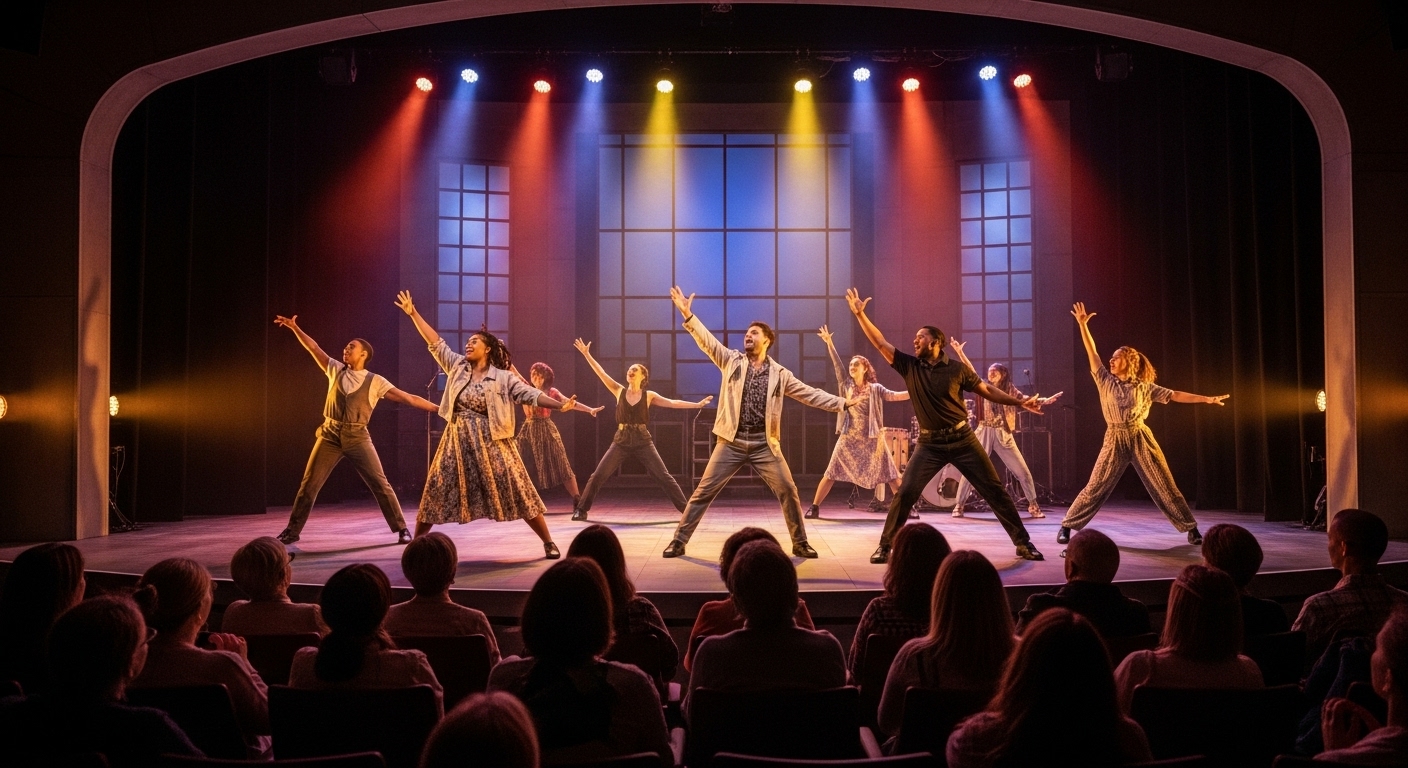In an age saturated with digital screens and virtual realities, the enduring magic of “theater” shines brighter than ever. It’s the unique thrill of shared space, the palpable energy between performers and audience, and the raw, unfiltered emotion of a story unfolding live before your very eyes. This art form remains a vital mirror to society, a crucible for human emotion, and a powerful force for community and connection across the globe.
The Irreplaceable Magic of Live Performance
Unlike film or television, theater is inherently ephemeral and immediate. No two performances are ever exactly alike, making each viewing a unique experience. This “liveness” is central to its allure:
- Shared Experience: Audiences and performers are co-creators in a single moment, breathing the same air, reacting together, and forming a temporary community. The energy exchanged is tangible and creates a powerful collective memory. Studies have even shown that audience members’ heartbeats can synchronize during a live performance.
- Authenticity: The human presence on stage, with all its vulnerability and immediacy, creates a profound sense of connection and authenticity that recorded mediums often struggle to replicate.
- Direct Engagement: Actors can subtly or overtly acknowledge the audience’s presence, fostering a more direct and intimate relationship. This interaction makes the audience an active participant, not just a passive observer.
- Immediacy and Risk: There’s an inherent thrill in live performance – the knowledge that anything could happen, an improvisation, a spontaneous reaction, or even a delightful, unscripted moment that makes that specific show unforgettable.
A Rich Tapestry: The Global Evolution of Theater
Theater’s roots are deeply entwined with ritual, storytelling, and community celebration across cultures:
- Ancient Origins: From the masked choruses of Ancient Greek tragedy and comedy (6th century BCE), which satirized politics and explored human destiny, to the elaborate spectacles of Roman theatre.
- Eastern Traditions: Highly sophisticated forms like Indian Sanskrit drama, Chinese Opera, and Japanese Noh and Kabuki theatre developed rich traditions of stylized performance, music, dance, and intricate costuming, influencing global performing arts for centuries.
- Medieval to Renaissance: In Europe, medieval mystery and morality plays gave way to the vibrant Renaissance theatre, epitomized by Shakespeare’s Globe Theatre in England and the improvisational Commedia dell’arte in Italy.
- Modern and Contemporary: The 19th century brought realism and naturalism, seeking to depict life more accurately. The 20th century saw experimental movements like absurdism and epic theatre, pushing boundaries of form and content, and exploring complex social and political themes.
The Future of Theater in 2025: Adapting and Thriving
As of mid-2025, theater is not just surviving but is actively adapting, innovating, and embracing new technologies while remaining true to its core essence:
- Technological Integration and Immersive Experiences: While inherently “live,” theater is strategically embracing digital tools. Projection mapping can transform sets dynamically, creating ever-changing backdrops. Digital lighting and sound design create highly sophisticated and immersive atmospheres. Productions are experimenting with Augmented Reality (AR) and Virtual Reality (VR) elements to enhance audience immersion or offer unique perspectives on the narrative. Some immersive theatre experiences blur the lines between performers and spectators, placing the audience directly within the unfolding story.
- Hybrid Forms and Digital Reach: The pandemic accelerated the trend of live-streamed performances and “digital theater,” allowing productions to reach global audiences far beyond the physical confines of a theatre. While not a replacement for the live experience, these hybrid models expand accessibility and offer new revenue streams, making theatre accessible to those who cannot attend in-person due to location or physical limitations.
- Audience Engagement and Personalization: Theatres are finding new ways to engage audiences beyond the performance, through pre-show talks, post-show discussions, and interactive experiences that deepen understanding and connection. Digital marketing strategies are increasingly personalized, using data analytics to tailor outreach and enhance the patron journey.
- Diversity and Inclusion as Central Themes: There’s a growing global movement to champion diverse voices, stories, and perspectives on stage. This includes a strong emphasis on inclusive casting, diverse storytelling, and promoting representation within production teams and leadership roles. This makes theatre more reflective of global society and relevant to wider audiences.
- Sustainability in Production: A growing trend in 2025 is a greater focus on eco-friendly practices in theatre production. This includes reducing waste, utilizing energy-efficient technologies for lighting and sound, promoting sustainable materials for sets and costumes, and exploring carbon-neutral touring models.
- Collaborations and Partnerships: Increased alliances between theatres, artists, and cultural institutions are fostering more diverse and impactful performances, allowing for sharing of resources and expertise.
- Educational Innovation: Technology is also trickling into theatre education, with AI and AR being used to push the boundaries of creativity and audience engagement in the classroom.
The magic of live storytelling, the shared breath between actor and audience, and the unique alchemy of a moment that will never be precisely replicated – these are the timeless qualities that ensure theater’s enduring power. As it continues to embrace technological advancements and fosters new generations of incredible talent, the curtain continues to rise, inviting us to witness, reflect, and be moved by the compelling narratives only live performance can deliver.

